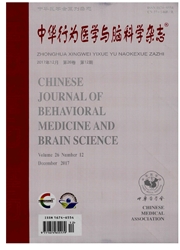

 中文摘要:
中文摘要:
儿童青少年精神障碍种类多样,尤其注意缺陷多动障碍与自闭症谱系障碍的患病率逐年升高,对儿童青少年的成长有较大影响。神经影像学研究提供的影像生物标志对此类疾病的诊断日益重要。在精神障碍的神经影像学研究中,机器学习在图像处理方面的应用逐渐成为有力工具,基于机器学习和神经影像的计算机辅助诊断研究也成为领域热点。本研究简要介绍了基于机器学习和结构磁共振的儿童青少年精神障碍的辅助诊断方法,并总结了注意缺陷多动障碍与自闭症谱系障碍方面的诊断研究进展。结果显示,目前已有多种机器学习方法应用于儿童青少年精神障碍的辅助诊断研究中,但这些方法还无法应用于临床诊断。未来研究需从多方面提高机器学习方法的诊断能力,从而为儿童青少年精神障碍的临床诊断提供客观可靠的辅助工具。
 英文摘要:
英文摘要:
Child and adolescent mental disorders are common disorders with various symptoms, and attracting more attention due to the increasing prevalence. Mental disorders, especially the attention-deficit hyperactivity disorder (ADHD) and the autism spectrum disorder (ASD), have great influence on the devel- opment of children and adolescents. Nowadays, the biomarkers from neuroimaging such as magnetic resonance imaging (MRI) have a great importance on the diagnosis of mental disorders, and machine learning has been proved to be very powerful in the processing for neuroimages. Nowadays, many researchers are focusing on the studies of computer-aided diagnosis (CAD) based on machine learning and neuroimaging. In this review,the technical details of machine learning based CAD of child and adolesceut mental disorders are briefly intro- duced, and the research progress in CAD of ADHD and ASD based on machine learning and structural MRI are summarized. These studies showed that many machine learning methods have been used in the diagnosis of child and adolescent mental disorders, but the relevant methods cannot be applied to clinical diagnosis. Further studies should be conducted to improve the diagnostic ability of machine learning methods from mul- tiple perspectives, and provide an objective and reliable tool for the clinical diagnosis of child and adolescent mental disorders.
 同期刊论文项目
同期刊论文项目
 同项目期刊论文
同项目期刊论文
 期刊信息
期刊信息
